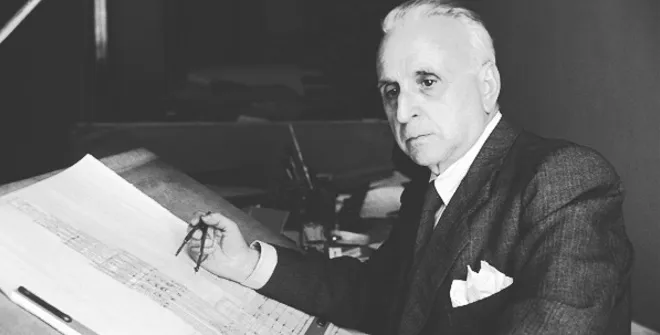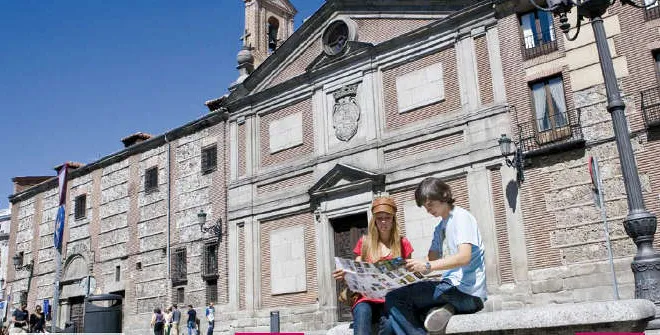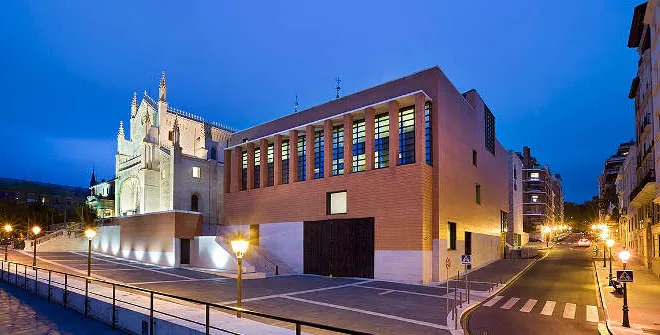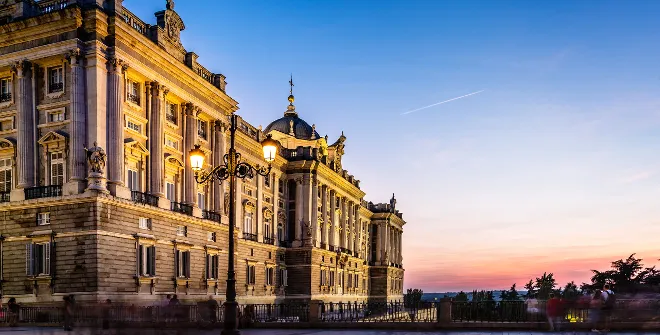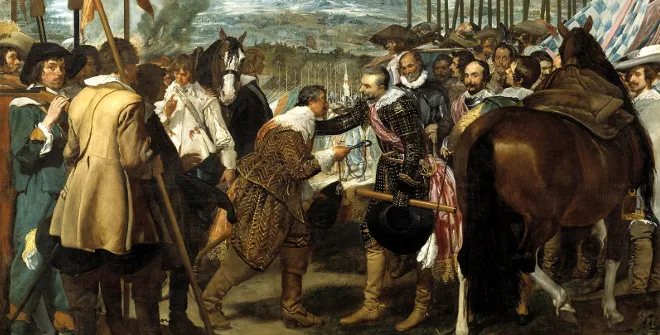Antonio Palacios’ Madrid
If Antonio Palacios had not existed, Madrid’s skyline would be completely different . This unique architect and urban developer, born in Galicia in 1874, designed such unique buildings and spaces that his name has joined the ranks of the great designers of the capital of Spain, along with Ventura Rodríguez and Juan de Villanueva. A far cry from the architectural designs of his era, he made his mark in the section that goes from Puerta del Sol to Plaza de Cibeles, although he was also involved in the Salamanca neighbourhood and, of course, in the Metro network. It is said that Antonio Palacios is to Madrid what Antoni Gaudí is to Barcelona. Discover his major works:
Communications Palace (Plaza de la Cibeles, 1. Metro: Banco de España, L2)
Built out of stone, iron and glass, the Communications Palace, better known today as Cibeles Palace, is one of the most emblematic buildings in Madrid thanks to its spectacular and monumental white façade. There is no tourist who does not immortalise its façade. It occupies 30,000 square metres of what used to be the Buen Retiro Gardens. Today, it is the headquarters of Madrid City Council and the CentroCentro Centre, a public and open space devoted to contemporary art, but which was designed as the Post Office and Telegraph Company, opened in 1909.
Fine Arts Circle (Calle Alcalá, 42. Metro: Banco de España, L2)
Located at the junction of the two main thoroughfares in Madrid, Calle de Alcalá and Gran Vía, the Fine Arts Circle continues to have the same iconographic value in the urban setting since it was first built. On 8 November 1926, King Alfonso XIII opened an exhibition of paintings by Zuloaga to inaugurate this cultural space which, over time, would be directed by Jacinto Benavente or Carlos Arniches. Picasso came here to give painting classes and Valle-Inclán was a regular in its halls. A visit to the rooftop terrace is a must, presided by the spectacular bronze sculpture of Minerva, by Juan Luis Vassallo to contemplate Madrid with a 360 degree panoramic view. It is also worth savouring its delicious gastro-cultural space, La Pecera, on the ground floor.
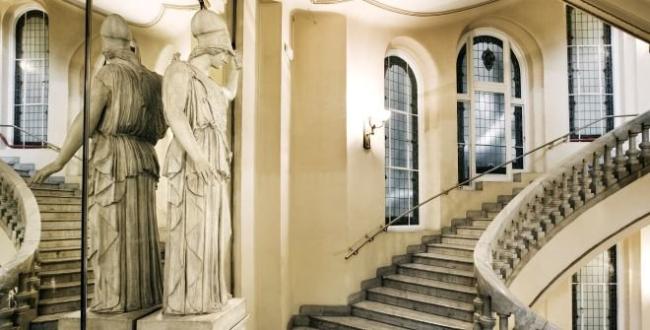
Former Hospital of Day Labourers (Calle Maudes, 17. Metro: Cuatro Caminos, L1)
Opened in 1916 as San Francisco de Paula Hospital of Day Labourers, the Maudes Palace (or Hospital) was commissioned by a charity to provide free healthcare to Madrid’s day labourers. Its exterior white stone façade, along with the pinnacles and balustrades of its towers, is reminiscent of the Cibeles Palace. Following diverse ups and downs, it now belongs to the Community of Madrid, except the church which also forms part of this monumental ensemble. Following its rehabilitation, this space houses the headquarters of the Department of Transport and Infrastructures of the Community of Madrid.
Banco Español del Río de la Plata (Calle Alcalá, 49. Metro: Banco de España, L2)
Known as the Caryatid Building, it is one of the most spectacular works by the visionary, Antonio Palacios. It is worth mentioning that the star architect in Madrid often worked with Joaquín Otamendi, whose name tends to be relegated compared with the fame of the former. The building, which today is home to the Cervantes Institute was designed, without skimping on resources, as the headquarters of the Banco Español del Río de la Plata. Opened on 29 April 1918, it stands out for the four immense caryatides that flank its main entrance and the spectacular Ionic columns of its façade, at the junction of Calle de Alcalá and Calle Barquillo. Inside, it has an impressive glass dome and a vault in which manuscripts of the most important writers of the 20th century have been kept since 2007. At the beginning of the 21st century, it became the headquarters of the Cervantes Institute, and is mainly used to host exhibitions and as offices.
Mercantile and Industrial Bank (Calle de Alcalá, 31. Metro: Banco de España, L2)
Also known as the bank headquarters, this building was constructed between 1935 and 1943 to house the Mercantile and Industrial Bank. Today it is home to the Community of Madrid’s Department for Culture and Tourism and harbours the Alcalá 31 Exhibition Hall, where it is possible to contemplate temporary contemporary art exhibitions. The building has two façades. One of them overlooks Calle del Caballero de Gracia whilst the other faces out onto Calle de Alcalá, which stands out for a gigantic horseshoe arch and a spectacular lookout.
Antigua Casa Comercial Palazuelo (Calle Mayor, 4. Metro: Ópera, L2)
Inspired by the architecture of Chicago, it was one of the first commercial buildings in Madrid and today, it still has the same purpose for which it was designed in 1920. Its façade stands out for its Corinthian columns, among which there are several iron and glass lookouts. It has a central courtyard with a marble floor and glass tiles, presided by an imperial staircase and a large stained-glass window which allows zenithal light through. With the same influences, Palacios built the beautiful Matesanz Building, at Number 27 Gran Vía, designed as a commercial building for shops and offices.
Private Homes
Antonio Palacios also designed many homes in Madrid for well-off families which have their own particular and monumental seal. This is the case of the house he built for Doctor Emilio Rey at Number 20 and 22 Calle de Viriato or the rental apartment block at Number 6 Glorieta de Quevedo. He also left his mark at the Count of Bugallal palace, located at Number 4 Plaza de Cánovas del Castillo; the houses of the Palazuelo Palace, in Calle de Alcalá 54, which is undoubtedly Palacios’ major private property in Madrid; the house commissioned by Tomás Rodríguez in Calle del Marqués de Villamejor, 3, one of his first works in Madrid along with the properties belonging to Luis Harguindey in Serrano, 53; or the adjacent properties belonging to Luisa Rodríguez Arzuaga, in Calle Marqués de Villamejor, 1
It is worth highlighting his own modest home in Colonia El Plantío with a simple historicist appearance that is different to his monumental works in Cimarra, 4; the Palace of Joaquín Otamendi in María de Molina, 9, where the works were directed by Otamendi between 1911 and 1913; and the Properties located in Calle Alcalá, 139.
Works for Metro de Madrid
It is worth mentioning that Antonio Palacios was also the architect of the Metropolitan Railway Company. He designed the Tirso de Molina and Chamberí metro stations and was responsible for the company’s logo in the shape of a diamond. He was also responsible for the former lift at Metro de Gran Vía with the original surrounding structure known as the Templete de la Red de San Luis, which stood between 1920 and 1970. Antonio Palacios created it as a solution to reach the surface from the Gran Via metro station.
Chamberí station (otherwise known as the ghost station), along with the Engine Hall, form part of the museum centre, Andén Cero, that is open to the public from Tuesday to Sunday.
Palacios planned the construction of a series of facilities intended to guarantee the electricity supply, such as the Pacífico Electricity Power Station and the Quevedo Power Station (Gonzalo de Córdoba, 12 and Olid, 9). The Andén 0. Pacífico Engine Hall building takes us back to the first years of life of the Metro de Madrid. It was built to ensure the power supply to the suburban railway, which was in its early stages. The building in Calle Castelló, 21, located in the heart of Madrid, has a façade that looks like a block of apartments for residential use.
Don't miss our content Routes around Madrid
